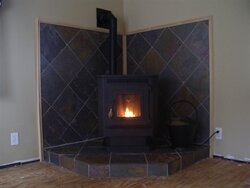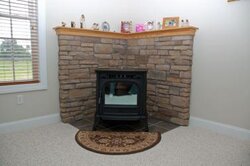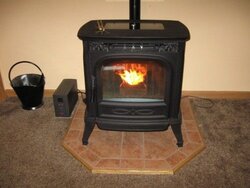I have a Harman XXV coming on Wednesday! Now I need to build the hearth pad.
I picked out the stone I want -- I think it's called Emerald Bluestone (or something like that).
My plan is to make a frame of 2x4's (on their sides). Then plywood on top, then hardiebacker. Then I'll cement the stones in. So, 2x4 + plywood + hardiebacker will make it about 5 or so inches tall, before the stones are applied. Ideally i would like to stone the sides as well, but the stones are bigger so I'd have to break them and apply them. Is this going to be a nightmare? Any tips on this, or on how to make the edges clean? The other option is to have wood sides, but that's not as appealing to me.
I picked out the stone I want -- I think it's called Emerald Bluestone (or something like that).
My plan is to make a frame of 2x4's (on their sides). Then plywood on top, then hardiebacker. Then I'll cement the stones in. So, 2x4 + plywood + hardiebacker will make it about 5 or so inches tall, before the stones are applied. Ideally i would like to stone the sides as well, but the stones are bigger so I'd have to break them and apply them. Is this going to be a nightmare? Any tips on this, or on how to make the edges clean? The other option is to have wood sides, but that's not as appealing to me.




